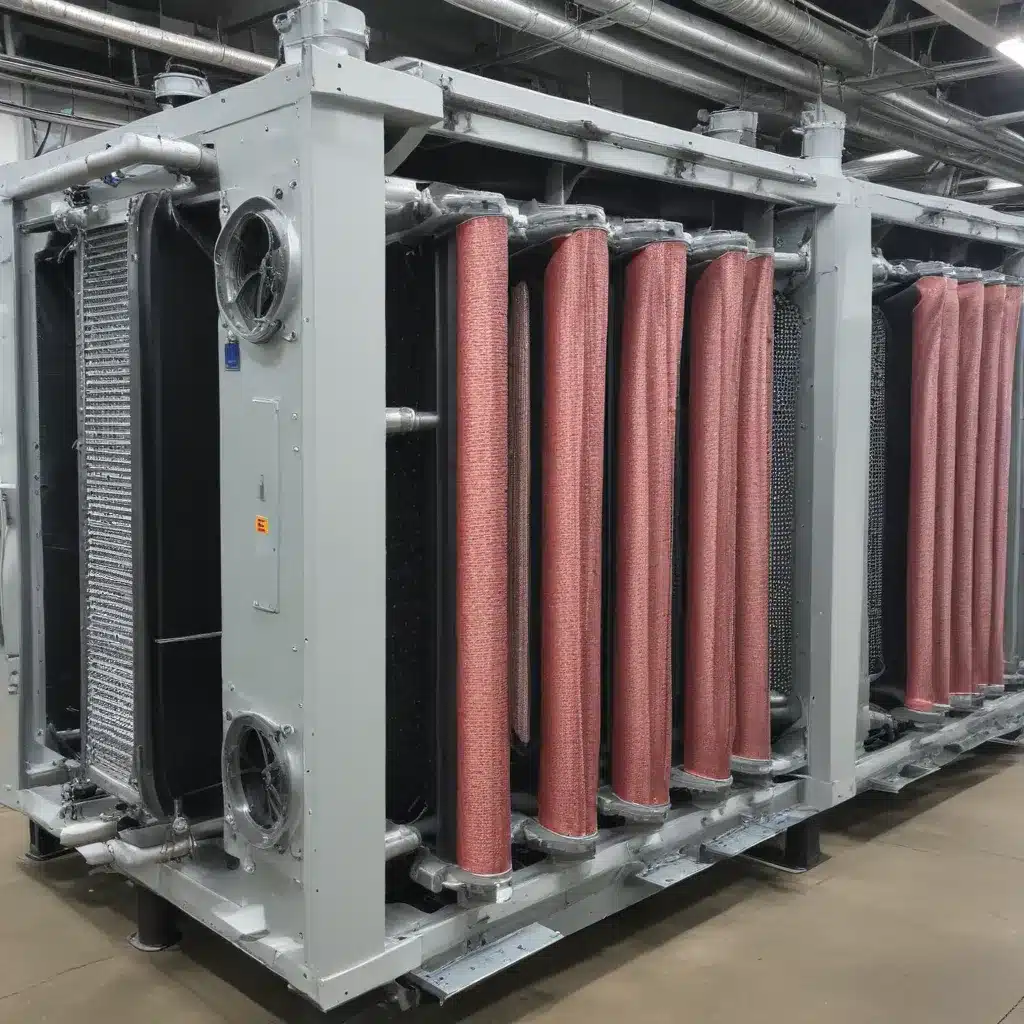
The Importance of Effective Thermal Regulation in Textile Production
Maintaining optimal temperatures and efficient heat transfer is crucial in the textile and apparel manufacturing industry. From fiber processing and dyeing to garment assembly and finishing, various stages of textile production require precise thermal management to ensure product quality, energy efficiency, and worker comfort. Air-cooled heat exchangers play a pivotal role in achieving these objectives.
Air-Cooled Heat Exchangers: The Backbone of Thermal Regulation in Textile Manufacturing
Air-cooled heat exchangers are versatile, energy-efficient, and widely adopted cooling solutions in textile plants. They facilitate the transfer of heat from process fluids, machinery, and ambient air, enabling effective temperature regulation throughout the manufacturing environment. By optimizing the design, materials, and operational parameters of these heat exchangers, textile manufacturers can enhance their overall thermal management capabilities, leading to numerous benefits:
-
Enhanced Energy Efficiency: Properly designed and maintained air-cooled heat exchangers can significantly reduce energy consumption, lowering operating costs and carbon footprint. This is achieved through improved heat transfer rates, reduced fan power requirements, and optimized heat rejection.
-
Improved Product Quality: Consistent temperature control during critical processes, such as fiber formation, dyeing, and finishing, helps maintain product integrity, color fastness, and dimensional stability, resulting in higher-quality textiles.
-
Increased Worker Comfort and Productivity: By regulating ambient temperatures, air-cooled heat exchangers create a more comfortable working environment for textile employees, enhancing their productivity and well-being.
-
Reduced Maintenance Costs: Proper design and maintenance of air-cooled heat exchangers can extend their lifespan, minimize downtime, and reduce the need for frequent replacements, leading to lower overall maintenance expenditures.
Optimizing Air-Cooled Heat Exchanger Performance in Textile Manufacturing
To extract the maximum benefits from air-cooled heat exchangers in textile production, it is essential to understand the key factors that influence their efficiency and reliability. By focusing on the following areas, textile manufacturers can unlock significant improvements in their thermal management capabilities:
1. Heat Exchanger Design Considerations
Material Selection: The choice of materials for the heat exchanger’s core, fins, and casing can greatly impact its thermal performance, corrosion resistance, and durability. Aluminum, copper, and stainless steel are common options, each with unique advantages. Carefully evaluating the trade-offs between thermal conductivity, corrosion resistance, and cost is crucial.
Fin Design and Geometry: The design of the heat exchanger fins, including their shape, density, and surface area, plays a pivotal role in enhancing heat transfer. Innovations such as louvered, wavy, or serrated fins can improve air-side heat transfer coefficients and minimize pressure drops.
Air Flow Optimization: Ensuring efficient air flow through the heat exchanger is essential for maximizing heat transfer. Factors like fan design, air inlet/outlet configurations, and duct work can be optimized to reduce air-side pressure losses and improve air distribution.
Compact Design: Adopting a compact heat exchanger design can increase the surface area-to-volume ratio, leading to more efficient heat transfer and a smaller footprint, which is especially beneficial in space-constrained textile facilities.
2. Thermal Performance Evaluation and Monitoring
Heat Transfer Analysis: Conducting in-depth heat transfer analyses, either through computational fluid dynamics (CFD) simulations or empirical testing, can help identify the most efficient heat exchanger configurations for specific textile processes and operating conditions.
Thermal Efficiency Monitoring: Implementing real-time monitoring of key performance indicators, such as inlet/outlet temperatures, air/fluid flow rates, and pressure drops, can help textile manufacturers detect any deterioration in heat exchanger efficiency and initiate timely maintenance or upgrades.
Predictive Maintenance: By analyzing long-term performance data, textile companies can develop predictive maintenance strategies for their air-cooled heat exchangers, allowing them to anticipate and address potential issues before they lead to costly downtime or failures.
3. Maintenance and Cleaning Practices
Fouling Prevention: Implementing effective cleaning and maintenance protocols to prevent fouling of heat exchanger surfaces is crucial. This includes regular inspections, cleaning of fins and tubes, and the use of anti-fouling coatings or chemical treatments, where appropriate.
Finned Tube Maintenance: Proper cleaning and maintenance of finned tubes, which are susceptible to dirt and dust accumulation, can significantly improve heat transfer efficiency and reduce energy consumption.
Corrosion Control: Regularly inspecting and addressing any signs of corrosion on the heat exchanger components can extend the equipment’s lifespan and prevent catastrophic failures.
4. Innovative Heat Exchanger Technologies
Hybrid Heat Exchangers: The integration of air-cooled heat exchangers with alternative cooling technologies, such as evaporative cooling or phase change materials, can further enhance their thermal performance and energy efficiency in specific textile applications.
Nanomaterial-Enhanced Surfaces: The incorporation of advanced nanomaterials, such as carbon nanotubes or graphene, into heat exchanger surfaces can improve heat transfer coefficients, reduce fouling, and enhance overall thermal management capabilities.
Adaptive Heat Exchangers: Developing heat exchangers with the ability to dynamically adjust their configuration, air flow, or coolant parameters based on changing textile process requirements or ambient conditions can optimize energy usage and thermal regulation.
Unlocking the Full Potential of Air-Cooled Heat Exchangers in Textile Manufacturing
By focusing on the key design, performance evaluation, maintenance, and innovation aspects of air-cooled heat exchangers, textile manufacturers can unlock significant improvements in their thermal management capabilities. This, in turn, can lead to enhanced energy efficiency, product quality, worker comfort, and overall operational excellence – all of which are critical in the highly competitive and rapidly evolving textile and apparel industry.
To learn more about optimizing air-cooled heat exchanger performance for your textile manufacturing operations, visit the Air Cooled Heat Exchangers website or speak with one of our industry experts.
Conclusion
Air-cooled heat exchangers are the backbone of effective thermal management in the textile and apparel manufacturing industry. By understanding the key factors that influence their efficiency and adopting innovative strategies, textile manufacturers can unlock substantial benefits in terms of energy savings, product quality, worker comfort, and overall operational excellence. As the industry continues to evolve, the strategic deployment of advanced air-cooled heat exchanger technologies will be a crucial enabler for textile companies to maintain their competitive edge and meet the growing demand for sustainable, high-quality textile products.

